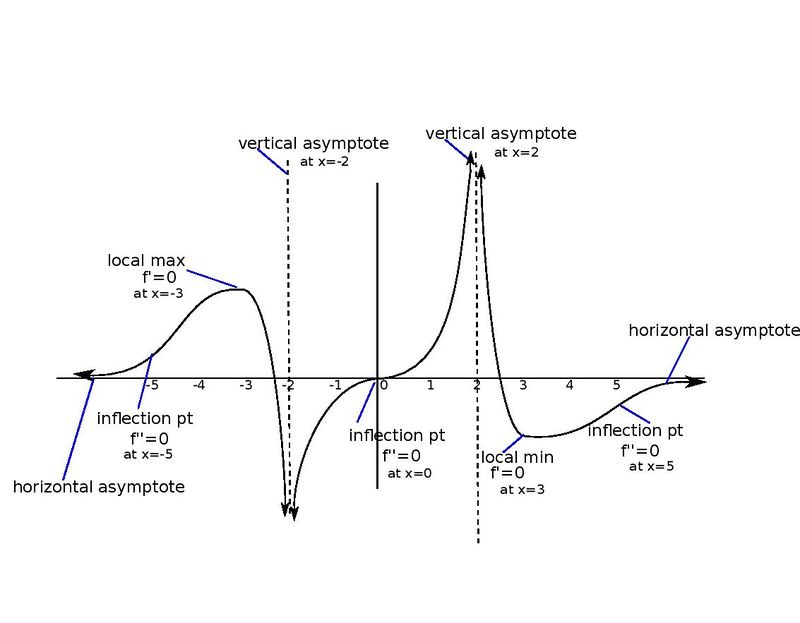Science:Math Exam Resources/Courses/MATH110/April 2017/Question 06 (c)
{{#incat:MER QGQ flag|{{#incat:MER QGH flag|{{#incat:MER QGS flag|}}}}}}
• Q1 (a) • Q1 (b) • Q1 (c) • Q1 (d) • Q1 (e) • Q1 (f) • Q1 (g) • Q2 (a) • Q2 (b) • Q2 (c) • Q3 (a) • Q3 (b) • Q4 (a) (i)-(ii) • Q4 (a) (iii) • Q4 (a) (iv) • Q4 (b) (i) • Q4 (b) (ii) • Q5 (a) • Q5 (b) • Q6 (a) • Q6 (b) • Q6 (c) • Q7 (a) • Q7 (b) • Q7 (c) • Q8 (a) • Q8 (b) • Q8 (c) • Q8 (d) • Q9 • Q10 • Q11 (a) • Q11 (b) • Q11 (c) •
Question 06 (c) |
|---|
|
Consider a function that is continuous and differentiable everywhere except at and , and such that it satisfies ALL of the following conditions:
|
|
Make sure you understand the problem fully: What is the question asking you to do? Are there specific conditions or constraints that you should take note of? How will you know if your answer is correct from your work only? Can you rephrase the question in your own words in a way that makes sense to you? |
|
If you are stuck, check the hint below. Consider it for a while. Does it give you a new idea on how to approach the problem? If so, try it! |
Hint |
|---|
|
Try to combine all of the information about f into a single table that itemizes the sign of and . Then, for each table entry, draw the appropriate part of the curve. Make sure that you put the local maxima/minima and inflection points in the same places that you listed in parts (a) and (b). |
|
Checking a solution serves two purposes: helping you if, after having used the hint, you still are stuck on the problem; or if you have solved the problem and would like to check your work.
|
Solution |
|---|
|
We will make a table outlining the information from part (a):
We will use this to create a similar table for f:
Note that this is consistent with inflection points at -5, 0, and 5, and with the fact that -3 is a maximum and 3 is a minimum. We put the pieces together and arrive at the graph below:
|
{{#incat:MER CT flag||
}}





























